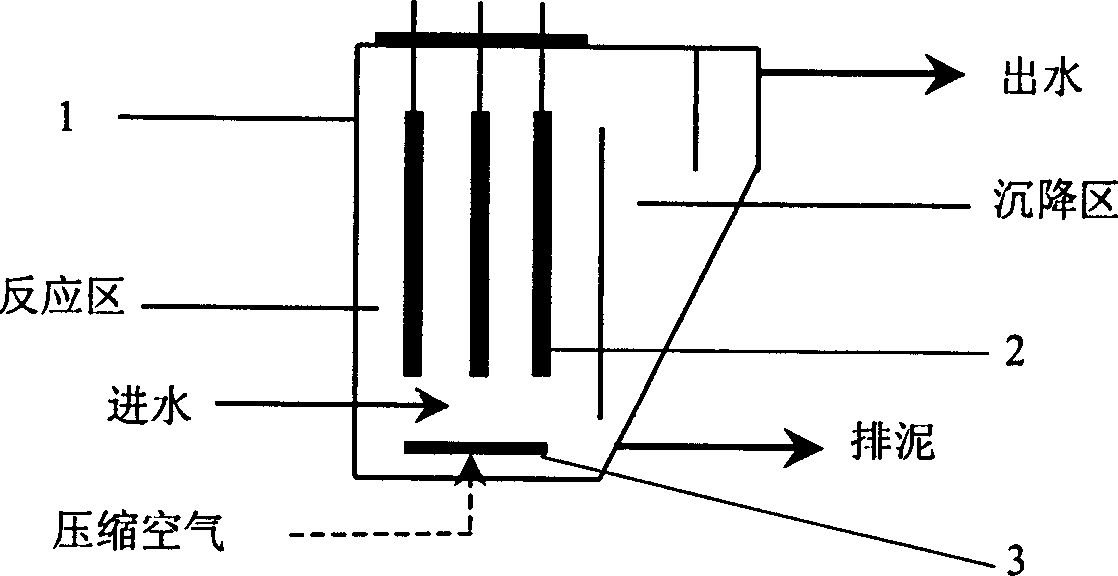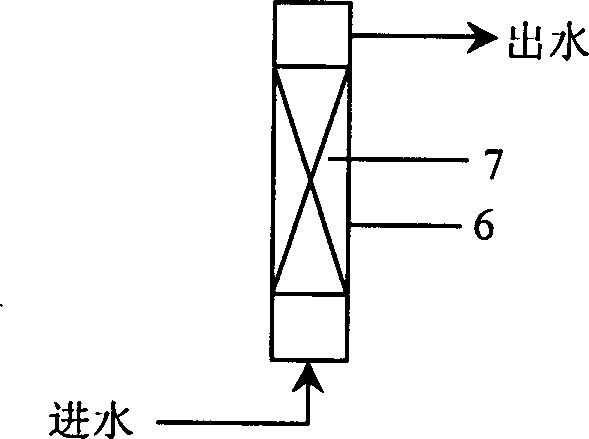Method of treating industrial waste water by actived sludge-micro-electrolytic process
A technology for activated sludge and industrial wastewater, applied in water/sludge/sewage treatment, water/sewage treatment, biological water/sewage treatment, etc. Good removal effect and high removal rate
- Summary
- Abstract
- Description
- Claims
- Application Information
AI Technical Summary
Problems solved by technology
Method used
Image
Examples
Embodiment 1
[0020] The activated sludge used in the test was taken from the first exposure tank of the south sewage treatment plant of Shengli Oil Refinery of Qilu Petrochemical Company. After being washed several times with tap water, it was poured into the tank. Hang a 25cm long 25×25 waste angle iron in the pool water. The treated wastewater is dry-process acrylic fiber process wastewater, and the COD after coagulation-sedimentation to remove insoluble COD is 1315.4mg / L.
[0021] Control the temperature of the reaction zone to be normal temperature, the pH value between 4.5 and 6.5, control the dissolved oxygen to be greater than 0.5 mg.L, and the sludge concentration to be 2 to 4 g / L. The domestication of activated sludge begins with a hydraulic retention time of 24 hours. Gradually reduce the hydraulic retention time until the hydraulic retention time is controlled within 10 hours and the COD removal rate is 45%. At this time, the acclimatization of activated sludge is over.
[0022...
Embodiment 2
[0024] According to the steps and conditions of Example 1, but the pH value of the reaction zone is controlled at 3.5-4.0, the hydraulic retention time is 10 hours, and the COD removal rate of wastewater is 48.5%.
Embodiment 3
[0026] According to the steps and conditions of Example 1, but use 20# carbon steel instead of angle steel to domesticate the activated sludge. After acclimatization, the pH value is controlled at 6.0-6.5, the hydraulic retention time is 10 hours, and the COD removal rate of wastewater is 51.3%.
PUM
 Login to View More
Login to View More Abstract
Description
Claims
Application Information
 Login to View More
Login to View More - R&D
- Intellectual Property
- Life Sciences
- Materials
- Tech Scout
- Unparalleled Data Quality
- Higher Quality Content
- 60% Fewer Hallucinations
Browse by: Latest US Patents, China's latest patents, Technical Efficacy Thesaurus, Application Domain, Technology Topic, Popular Technical Reports.
© 2025 PatSnap. All rights reserved.Legal|Privacy policy|Modern Slavery Act Transparency Statement|Sitemap|About US| Contact US: help@patsnap.com



